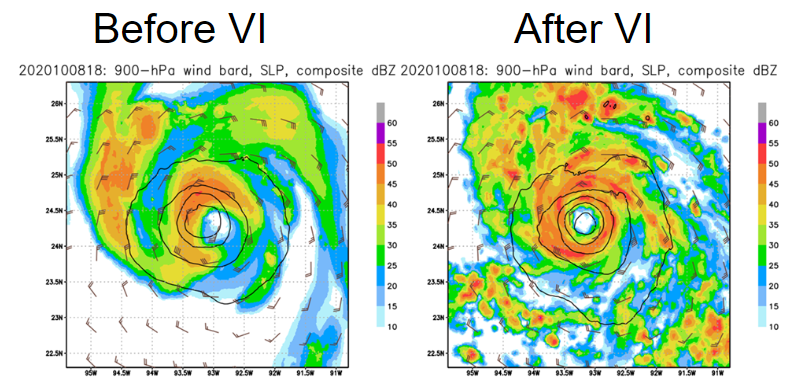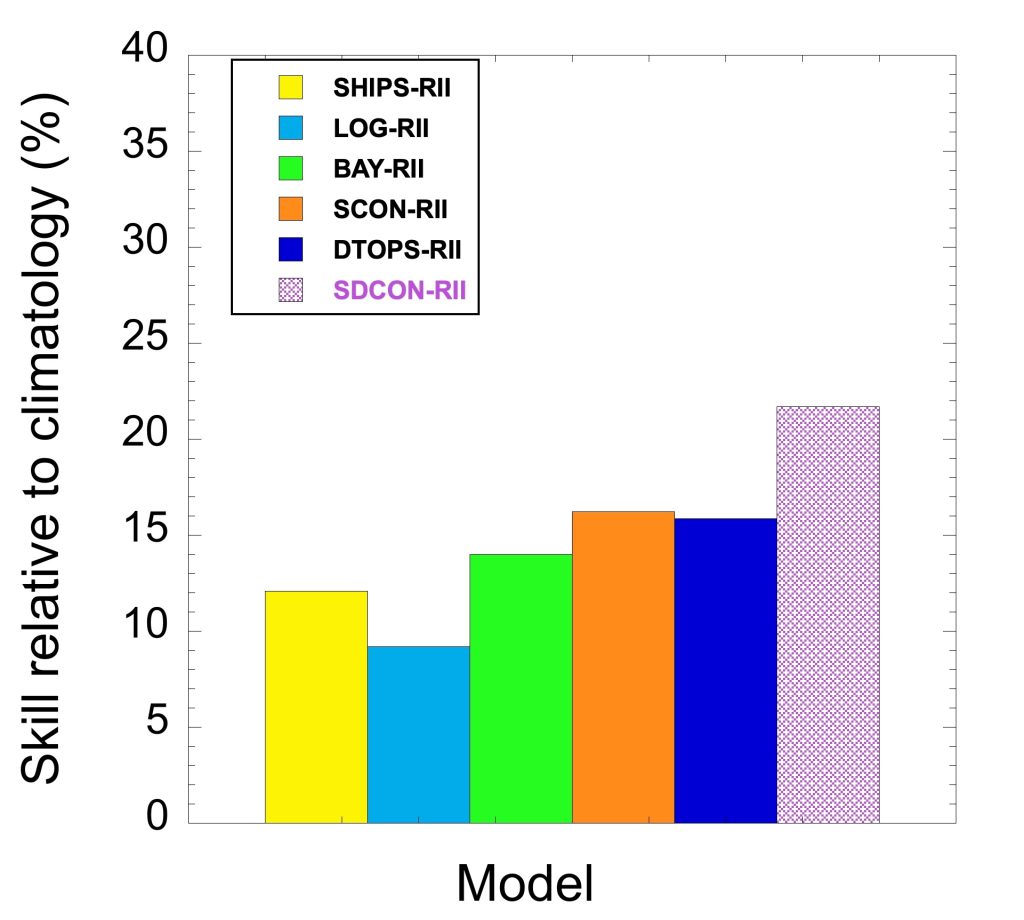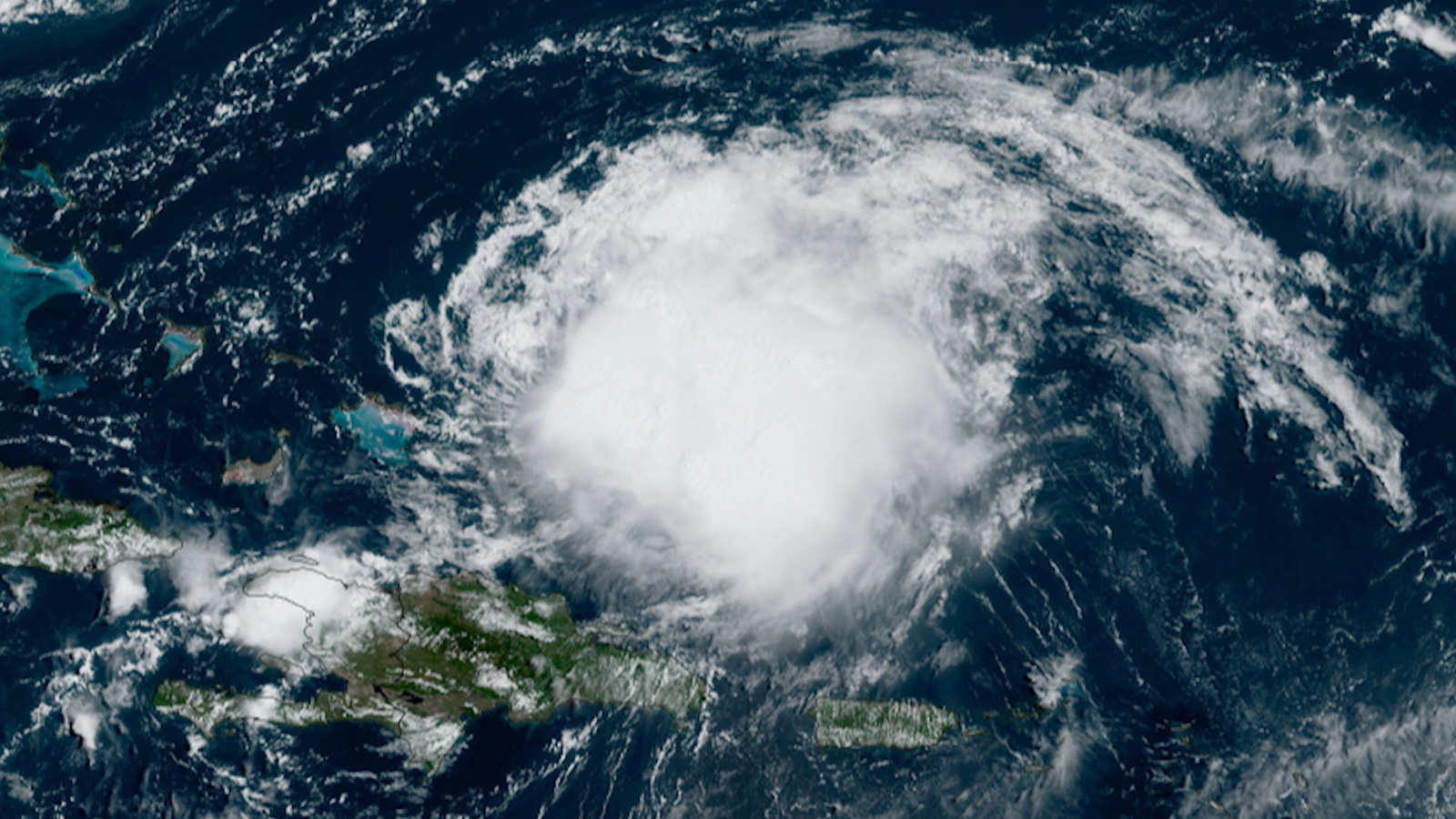With an active hurricane season on the horizon, the need for reliable hurricane forecasting is at the forefront of our minds. Unusually high sea surface temperatures, weakened vertical wind shear, and an enhanced West African monsoon are expected to contribute to the development of tropical cyclones in the Atlantic. To predict these developing storms, meteorologists employ models that rely on current observations and mathematical calculations to predict a storm’s behavior and track. These models are complex and use inputs from a variety of sources including historic, numeric, oceanic, and atmospheric data to generate their predictions.
AOML’s Hurricane Modeling Group has been systematically advancing its hurricane forecasting methods to prepare for this active season. By integrating innovative technology and refining its models, the group’s scientists aim to provide more accurate predictions of storm paths and intensities through innovative advancements in hurricane modeling. The Hurricane Modeling Group specializes in developing and evaluating these experimental and operational hurricane forecast models for transitions from research to operations. Improvements to these hurricane models provide better forecast guidance on tropical cyclone structure, intensity, and track to the National Hurricane Center.
These enhancements are designed to provide more accurate predictions and to better prepare communities for the impending storms. By leveraging technology and refined methodologies, these innovative advancements in hurricane models aim to offer clearer insights into storm trajectories and intensities to enhance public safety and preparedness.
HAFS v2.0
The Hurricane Analysis and Forecast System (HAFS) is NOAA’s next-generation numerical model and data assimilation system. HAFS aims to provide reliable and skillful guidance on tropical cyclone track, intensity, and structure. However, HAFS is not a static product; this July, the Hurricane Modeling Team will be testing and evaluating HAFS v2.0 for the remainder of hurricane season.
HAFS v2.0 features new upgrades that give the model greater precision when mapping storm development. This new version of HAFS can track changes in tropical cyclones more frequently, allowing for more detailed evolution and more accurate forecasts. The initial state of a storm provides lots of clues about how and when a hurricane may develop. HAFS v2.0 uses improved methods to create a more accurate picture of the storm’s starting conditions and the location of the eye based on observations and information from the National Hurricane Center. This creates a more detailed picture of the storm, as seen in figure 1, and leads to better forecasts of the hurricane’s overall structure, including the size and extent of hurricane-force winds. This is known as vortex initialization, and gives meteorologists a better understanding of the storm’s initial state.
These upgrades to HAFS v2.0 equip meteorologists with the tools necessary to make more accurate predictions and reliable forecasts that are crucial for timely preparation and response efforts, improving public safety and minimizing the impact of tropical cyclones.

MOM6 – Ocean Coupling
To enhance forecast accuracy, the Hurricane Modeling Team, working with the National Weather Service, has put into operation the Modular Ocean Model version 6 (MOM6), alongside HAFS v2.0. The interactions between the sea and the atmosphere play an important role in storm development and intensity; factors such as ocean salinity, temperature, currents, precipitation, and wave and wind patterns are crucial to understanding the energy that fuels a hurricane.
The MOM6 ocean coupling model synthesizes this oceanic data from gliders, satellites, buoys, sensors, and ships to provide measurements to equip forecasters with the information necessary to predict a storm’s behavior. The air-sea interactions that occur during tropical cyclone development are complex and dynamic. By integrating the MOM6 ocean coupling model into the HAFS model, researchers can gain a better understanding of the current state of the storm to predict intensity and track.
SDCON – Rapid Intensification
Under certain environmental conditions, tropical cyclones may undergo a process known as rapid intensification. This occurs when the winds inside the storm increase by at least 30 knots (30 miles per hour) in a 24 hour period, quickly enhancing the storm’s destructive potential and posing greater risks to affected regions. Rapid intensification occurs in over 80% of major hurricanes and nearly all category four and five hurricanes in the North Atlantic Basin.
However, this process is very difficult to predict. In an effort to improve tropical cyclone intensity forecasting, the Hurricane Modeling Team is working to develop a new model that predicts the probability of tropical cyclone rapid intensification. This new model – SDCON-RII- which represents a consensus of the SCON-RII and DTOPS-RII model forecasts, was shown to be more accurate than any of the current operational probabilistic RI models used to predict rapid intensification when verified on forecasts from the 2018-2023 hurricane seasons. As a result of its success, SDCON-RII has been adopted for operational use by the National Hurricane Center for the 2024 hurricane season. The implementation of SDCON-RII marks a significant milestone in our ability to anticipate and respond to the dynamic nature of tropical cyclones; by learning to predict a storm’s intensity changes, forecasters are able to warn at-risk communities with a greater lead time, minimizing loss of life and property.

Conclusion
Tropical cyclone modeling is a critical component in hurricane forecasting; these models are the backbone in track and intensity prediction when a storm develops. With innovative advancements in hurricane modeling such as the implementation of HAFS v2.0, the integration of ocean coupling, and the adoption of SDCON to forecast rapid intensification, NOAA’s Hurricane Modeling Team continues to push the boundaries of forecast accuracy and preparedness.. As the 2024 hurricane season begins, these refined models position meteorologists and forecasters better than ever to anticipate, respond to, and mitigate the impacts of landfalling hurricanes.
